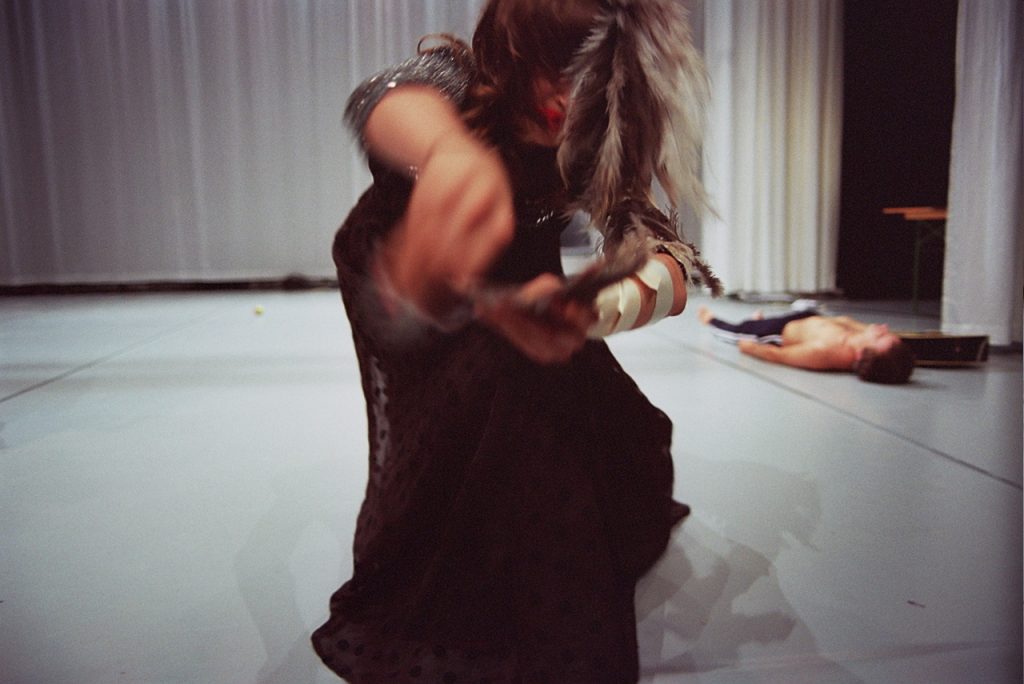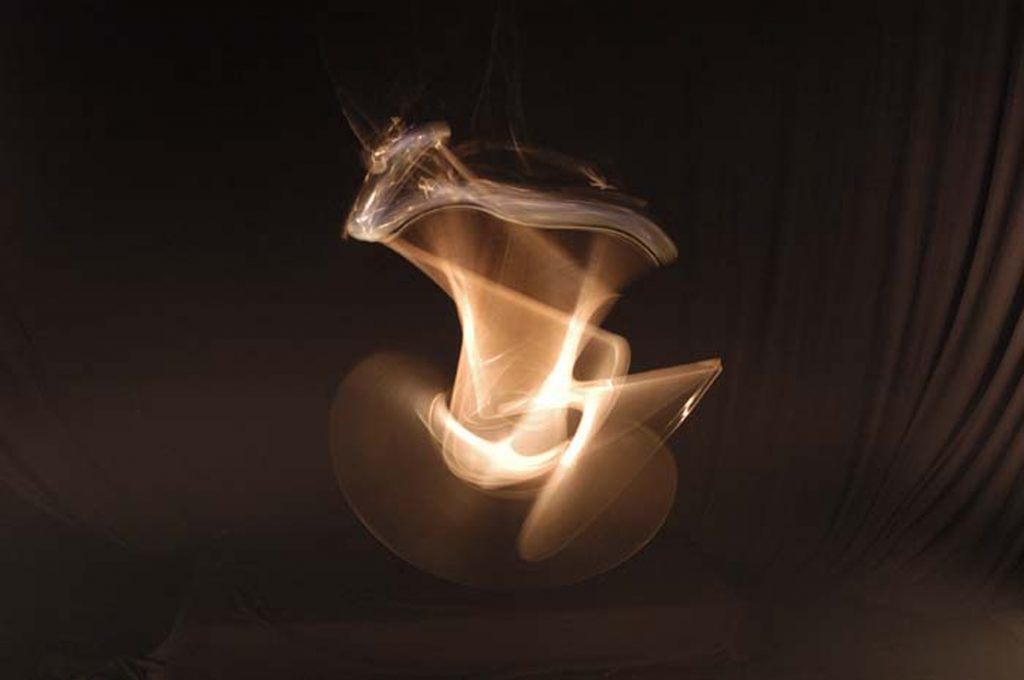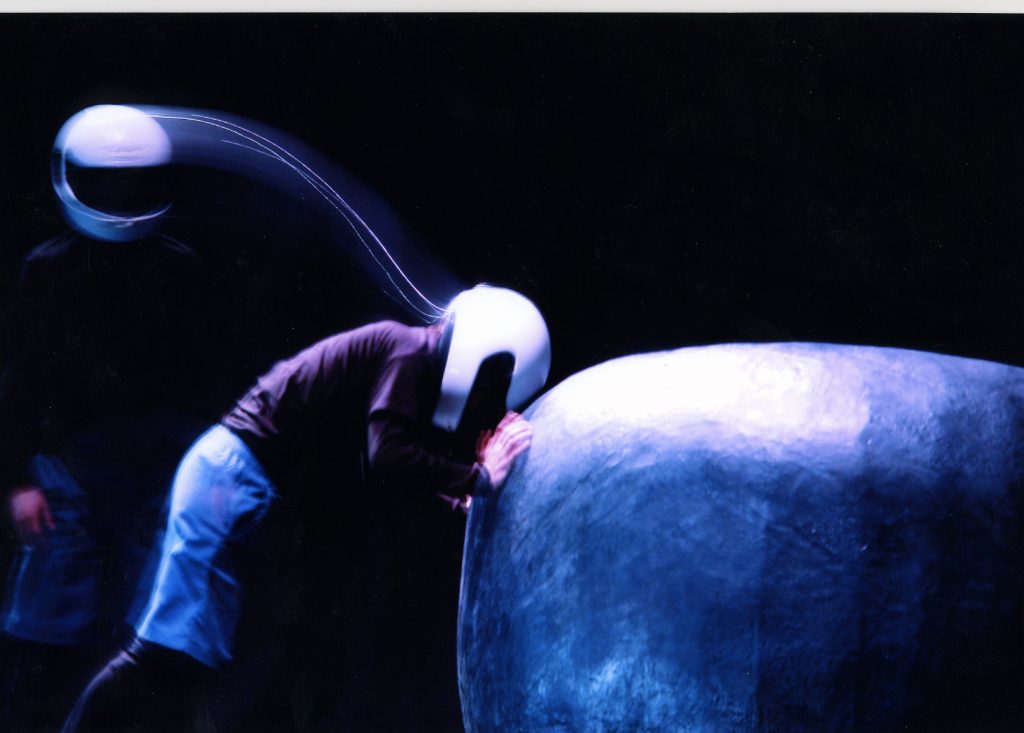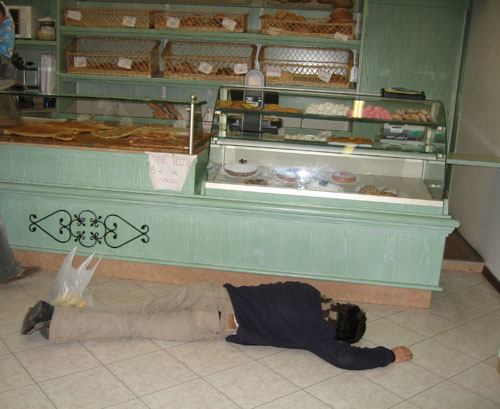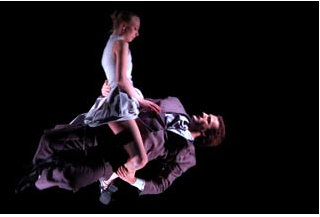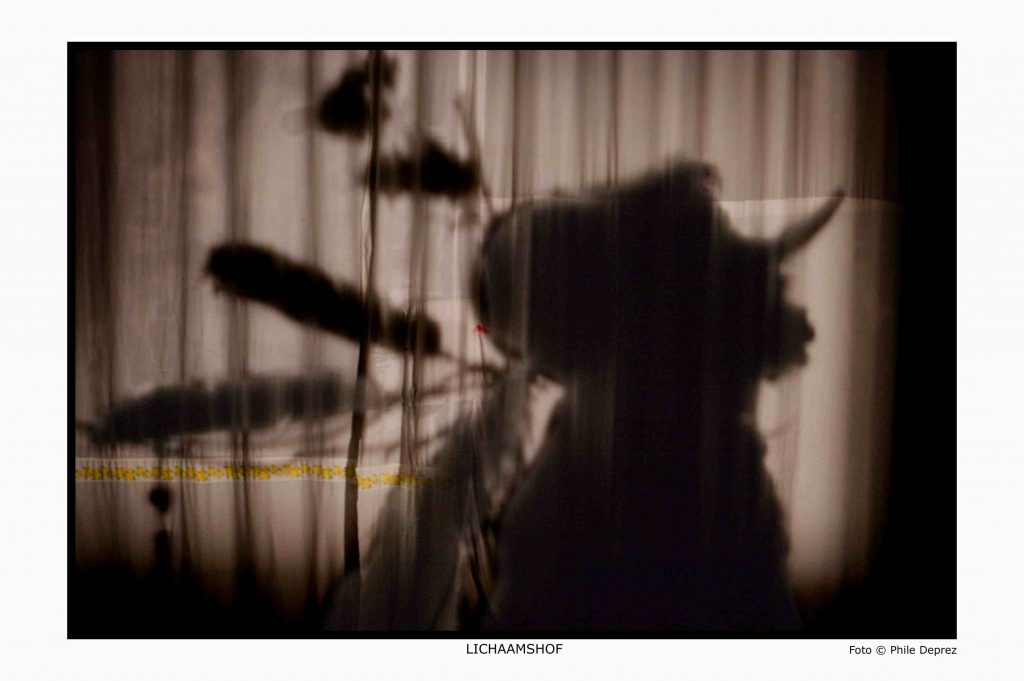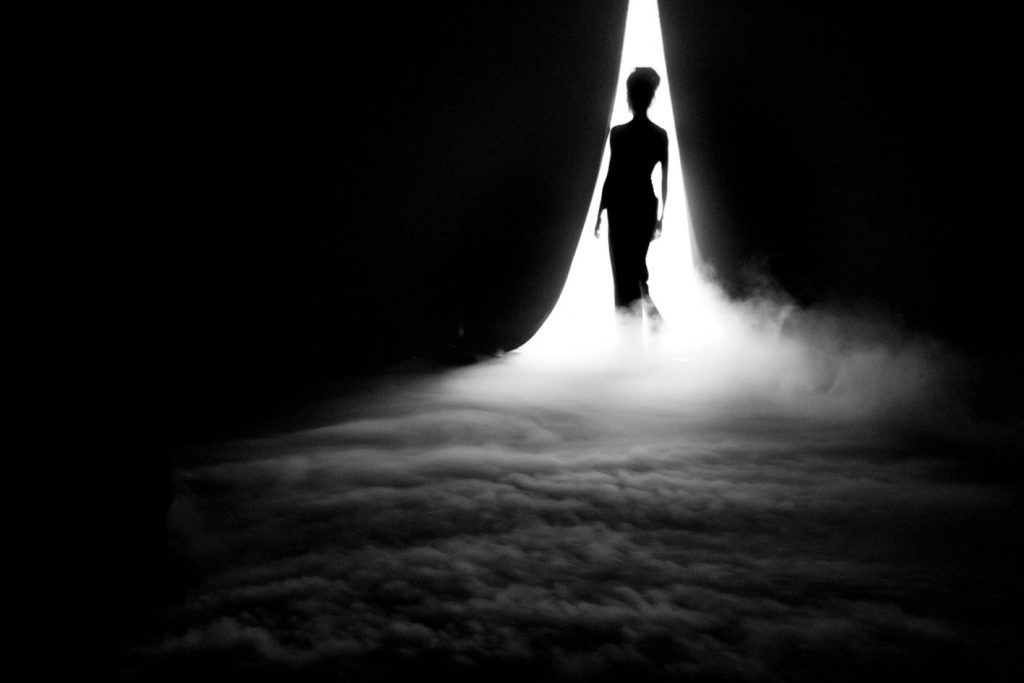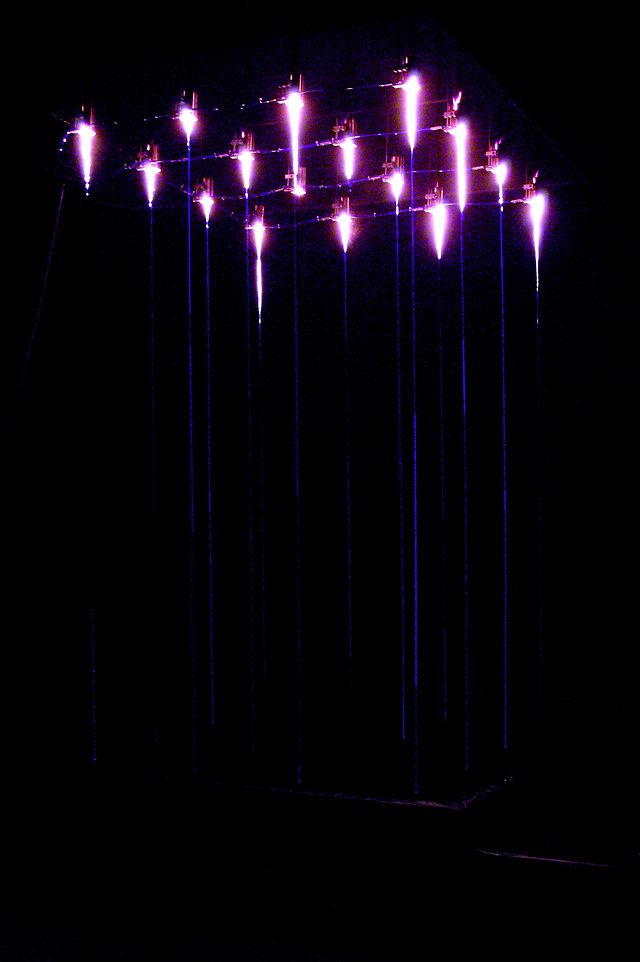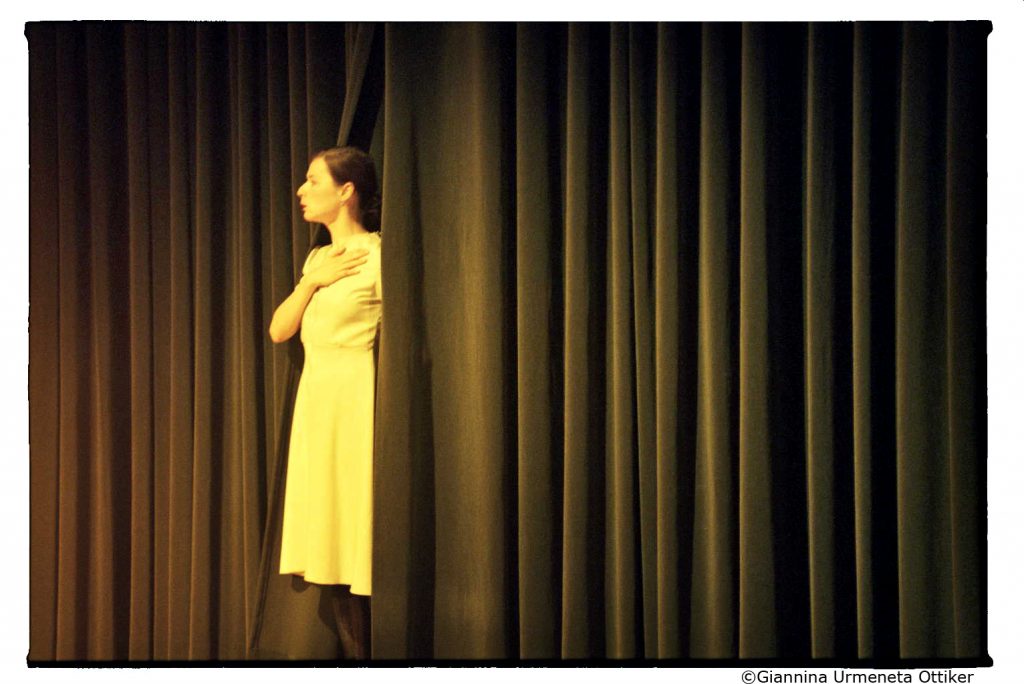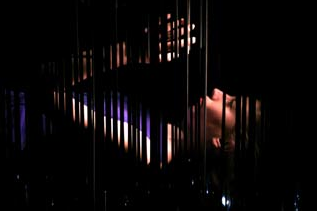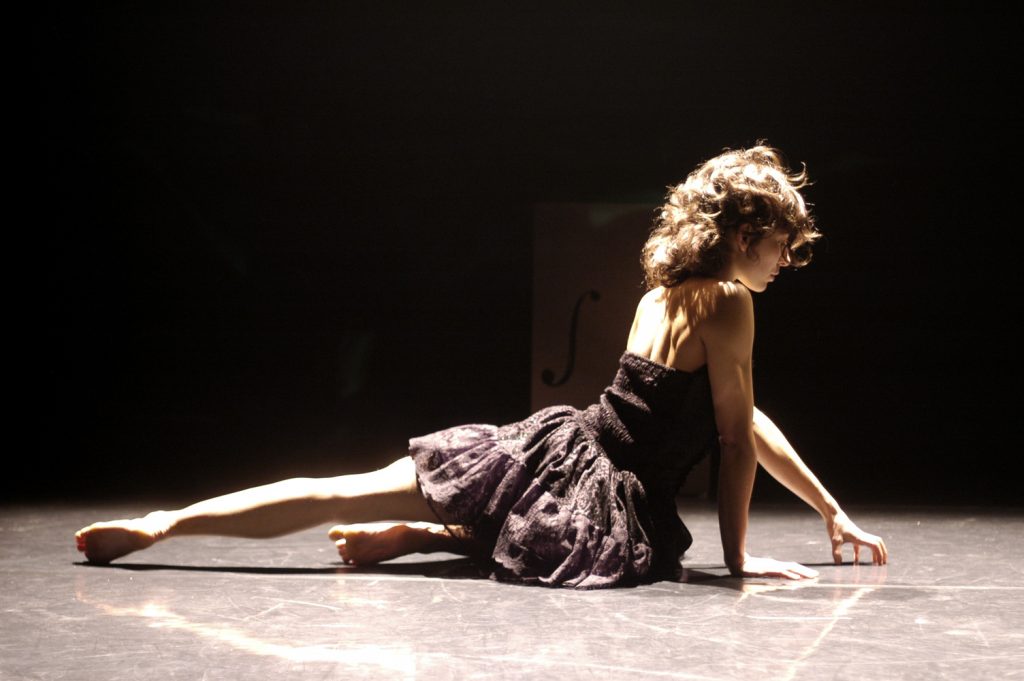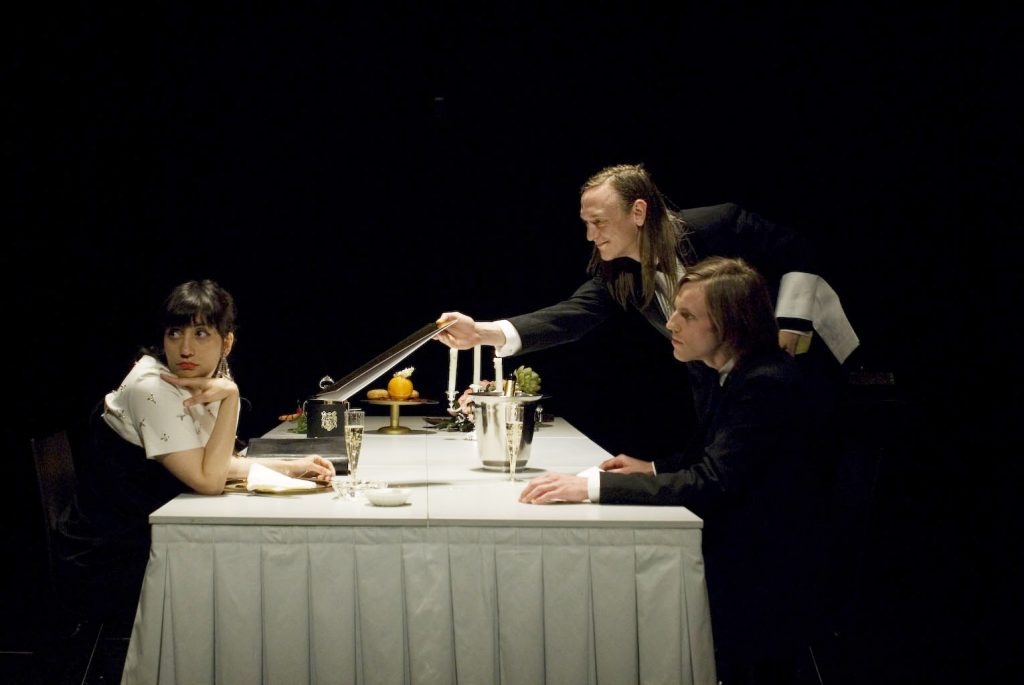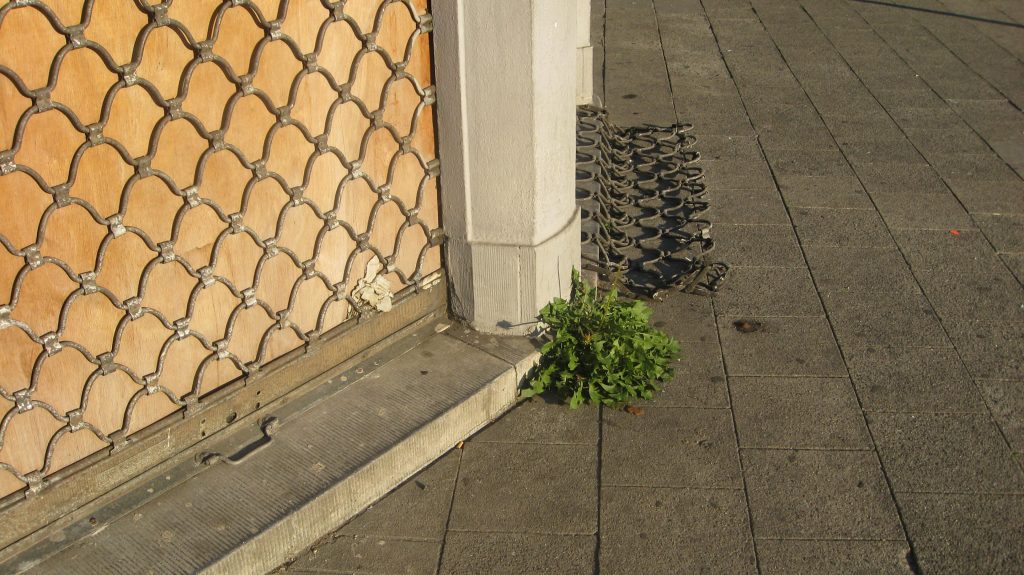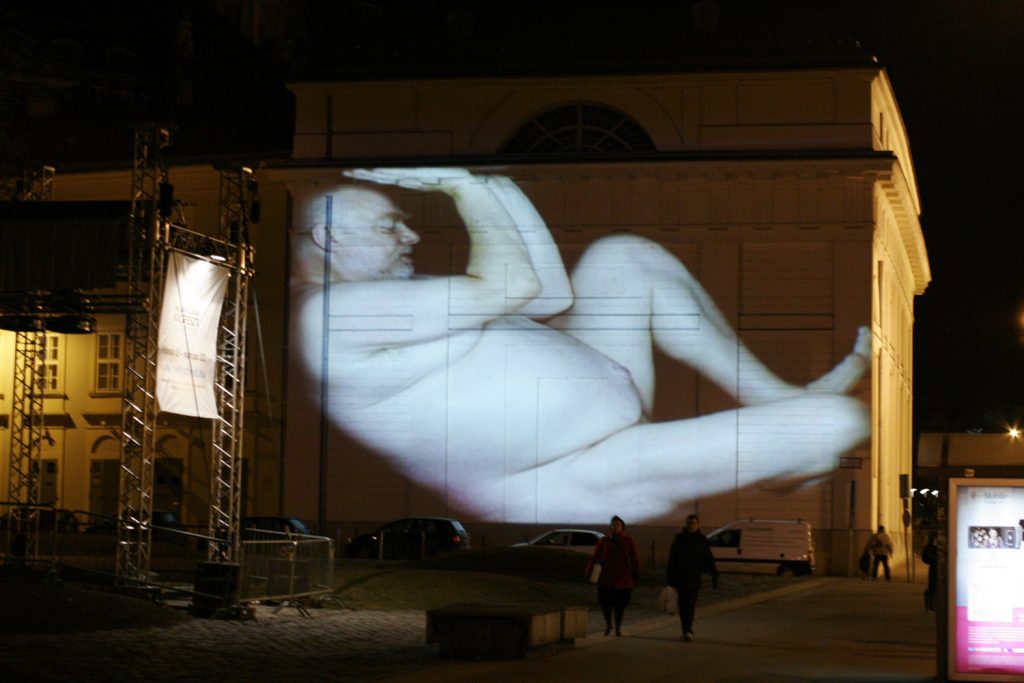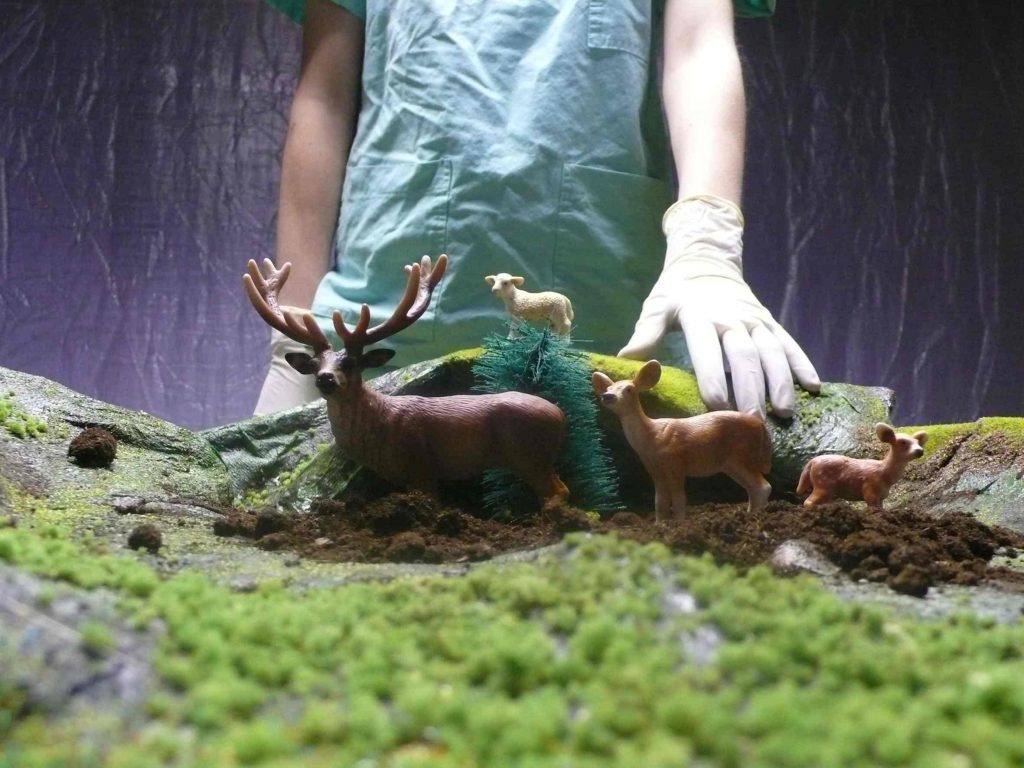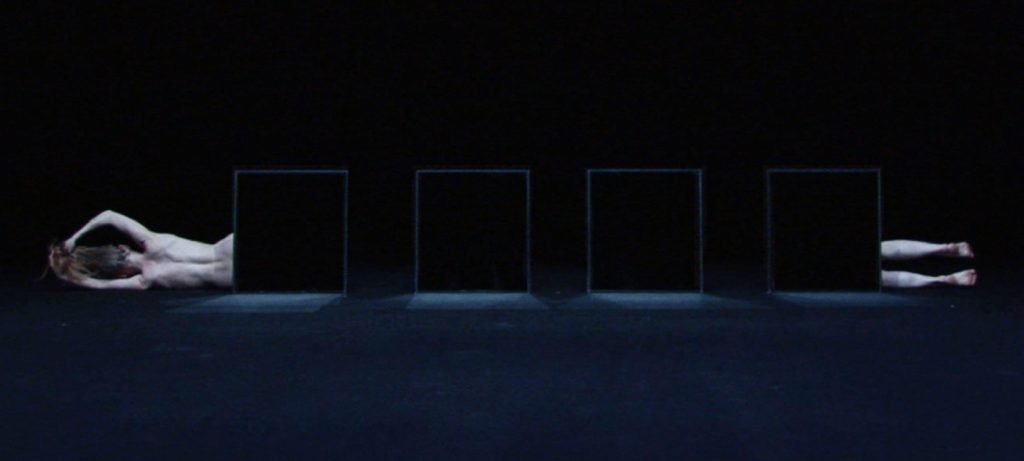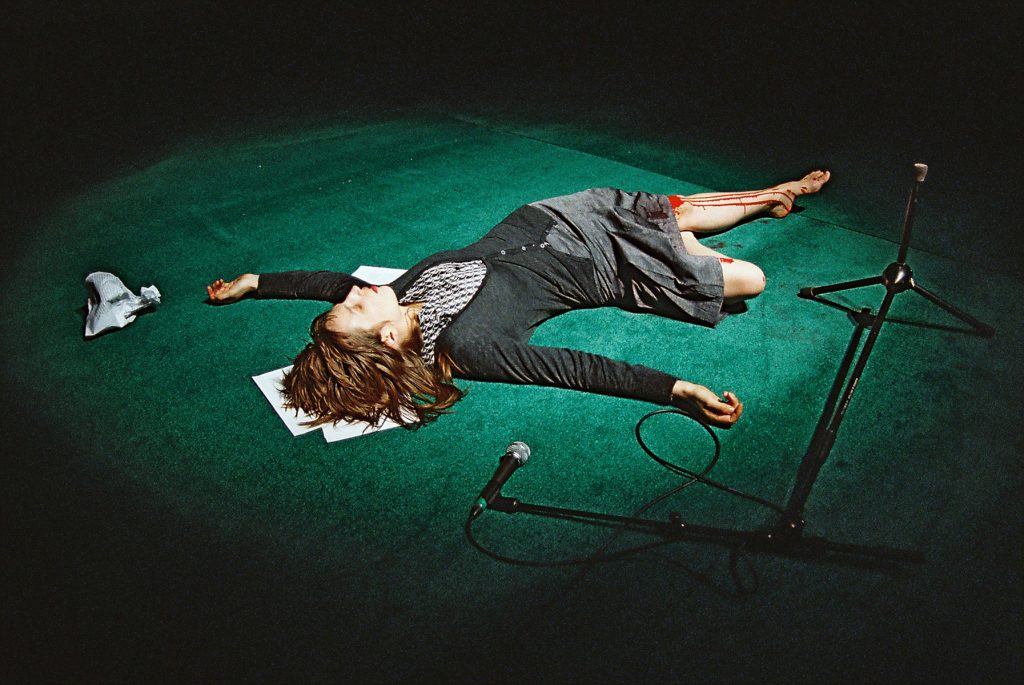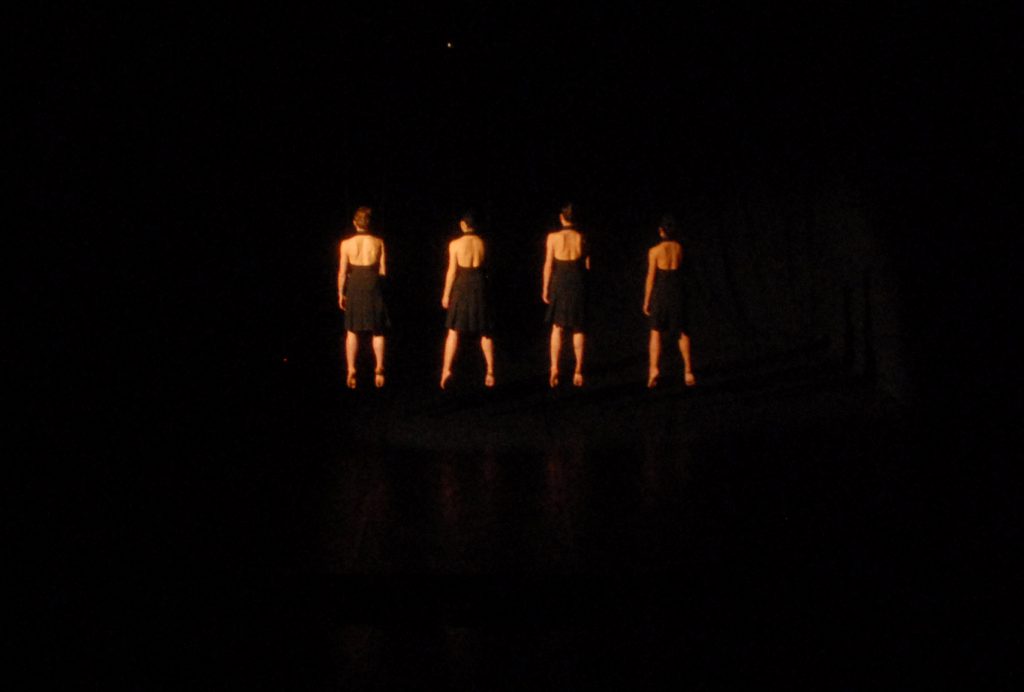Poni turns its guns on theatre. The key words in this performance are Ritual, Illusion and Death. How does one dismantle the rituals and obsessions of theatre? And what remains of classical themes, codes and tricks? What is the point of those curtains? What if the theatre itself does a striptease? And what illusions do we cling to, no matter what the price?
Themes: Death illusion and ritual
This triptych was absorbed, chewed and worked on by all members of the collective. This way, sub themes are created like circus, fairytales, memories/memory, religion, tennis, photography.
In short, Poni is engaged in a duel with theatre in a hybrid work that combines performance art, live rock music, dance and theatre.
